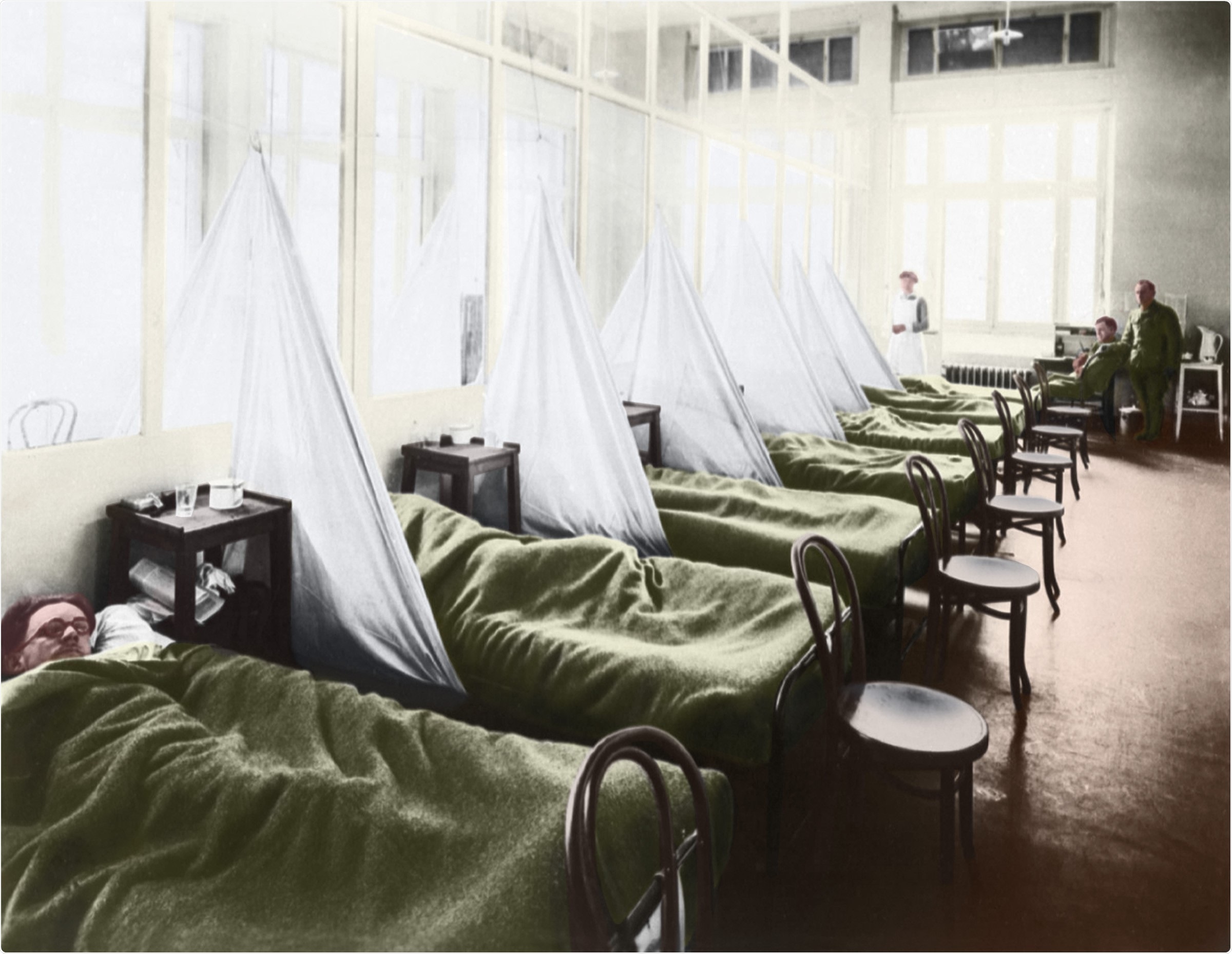COVID-19 deaths in U.S. surpass 1918 Spanish Flu pandemic - News-Medical.Net
The coronavirus disease (COVID-19) pandemic is most likely the deadliest outbreak in recent American history, exceeding the estimated deaths from the 1918 influenza pandemic.
Caused by the severe acute respiratory syndrome coronavirus 2 (SARS-CoV-2), the pandemic has now infected over 229 million individuals worldwide. Of these, more than 4.7 million people have perished from the virus.
In the United States, more than 42.4 million people have been infected with SARS-CoV-2. The death toll in the country has now topped 676,000. Over the past 28 days, the U.S. has reported 4.25 million new infections and over 45,000 deaths.
.jpg)
The 1918 Spanish Influenza Pandemic
In 1918, the Spanish flu pandemic was the first of three flu pandemics caused by the H1N1 influenza A virus; the most recent one was the 2009 swine flu pandemic. H1N1 was also responsible for the Russian flu of 1977.
The 1918 influenza pandemic spread throughout the world between 1918 and 1920 infected an estimated 500 million people or one-third of the world's population. The death toll reached an estimated 50 million across the globe. In the U.S., around 675,000 people were estimated to have died from the Spanish flu.
During that time, there were no vaccines or treatments developed against the H1N1 virus. Further, the 1918 flu came in three waves – the spring of 1918, the fall of 1918, and the winter and spring of 1919.
Many reasons have been proposed for H1N1's high mortality at the time, including a six-year climate anomaly affecting disease vector migration and possibly increasing the likelihood of being spread through bodies of water.
Despite the virus not being more aggressive than previous influenza strains, it was particularly harmful because it triggered a cytokine storm, which ravaged the more robust immune systems of young adults.
A combination of malnutrition, overcrowding in medical camps and hospitals, and poor hygiene, exacerbated by the war, led to superinfection, leading to the death of most of the victims.
The COVID-19 pandemic
The COVID-19 pandemic first emerged in December 2019 in Wuhan City, China. From there, it has spread to 192 countries and territories. SARS-CoV-2 was first detected in patients who worked at a wet market where wildlife trade is rampant. The virus' origins, however, are still unclear.
The COVID pandemic continues to spread as new SARS-CoV-2 variants emerge, making it harder to contain and control.
The current Delta variant threatens many countries with skyrocketing cases, causing healthcare systems to become overwhelmed or on the verge of collapse in some countries.
Death toll comparison
Health experts, however, reiterate to consider population when tackling outbreaks. For example, in 1918, the U.S. population was less than a third of today, with about 103 million people living in the U.S. before the 1920s.
At present, around 330 million people reside in the U.S. In a nutshell, the 1918 Spanish flu killed about 1 in every 150 U.S. residents, while the COVID-19 pandemic has killed 1 in 500 residents.
On the global scale, the 1918 Spanish flu killed an estimated 25 to 50 million globally. The COVID-19 pandemic has killed 4.7 million people so far.
The 1918 Spanish flu also worked differently, mainly affecting adults in their 20s, 30s, and 40s who were healthy. During this time, World War I was ongoing, with the massive movement of men across the U.S. and Europe. On the other hand, the COVID-19 pandemic is more severe in older adults and those with underlying health conditions.

During the Spanish flu pandemic, there were no vaccines or treatments. Today, effective vaccination efforts are well underway, with drug repurposing helping to alleviate symptoms and aid recovery.
Compared to a century ago, the healthcare system today is better prepared to handle COVID-19 patients. For example, there were no antibiotics, intensive care units (ICUs), ventilators, or intravenous fluids back in 1918. Also, the world now has access to national public health departments, virologists, epidemiologists, and immunologists.
The 1918 H1N1 flu virus infected so many people that they developed immunity to it. H1N1 was eventually weakened by mutation, and although the disease still exists today, immunity has been acquired through infection and vaccination.
It is now possible to get a safe and effective vaccine to protect from SARS-CoV-2 in the same way flu shots have long been available to protect from H1N1 and other strains of influenza.


Comments
Post a Comment